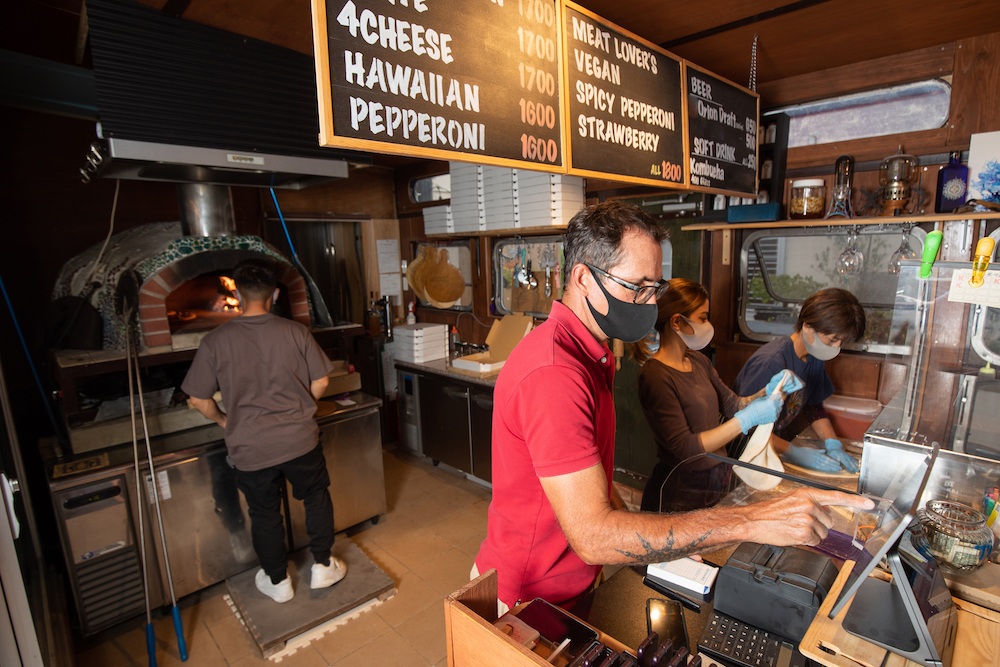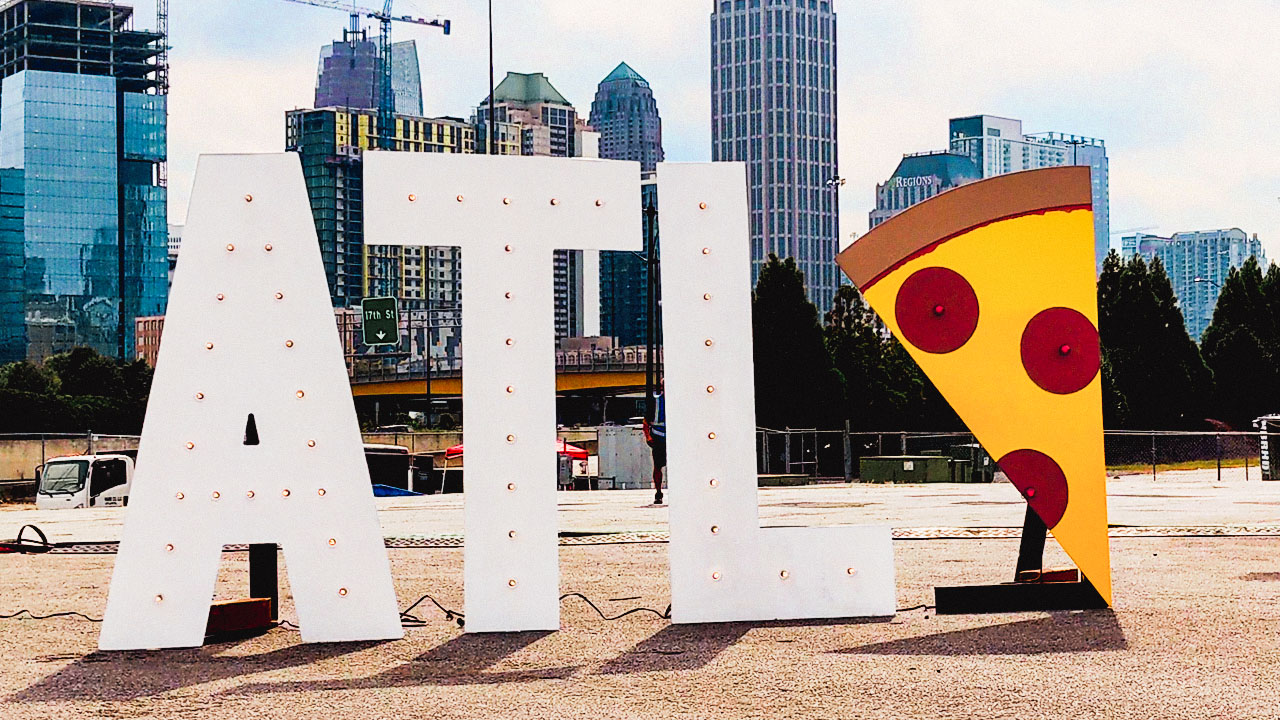Although third-party delivery services such as DoorDash and UberEats are gaining widespread popularity, ordering directly from a restaurant that offers its own delivery service is by far the preferred food delivery method. In fact, among consumers who put in delivery orders, 82% said they prefer to order directly from a restaurant, according to a Morning Consult poll conducted in 2018. While the process seems easy to the consumer, the employer has a messier situation to deal with, particularly when it comes to compensating delivery drivers.
Most delivery drivers are paid a sub-minimum hourly wage rate, earning the remainder of their wages through tips. This arrangement undoubtedly benefits employers, who can pay less to the delivery drivers, but ultimately complies with the Fair Labor Standard Act (FLSA), since delivery drivers theoretically earn more than minimum wage for their efforts after accounting for tips.
Nevertheless, employers who hire delivery drivers at sub-minimum wage rates should proceed with caution, because there are many potential pitfalls with serious financial ramifications for the employer. Jimmy John’s, Papa John’s, Domino’s and Pizza Hut have all had multi-party and class action employee claims related to how delivery drivers are paid.
Listed below are the top five issues employers should be aware of before employing sub-minimum hourly wage delivery drivers:
1. Inform the driver of the tip credit. A “tip credit” is the difference between the amount an employee must be paid under the minimum wage law and the amount directly paid to a tipped employee. For instance, assuming that minimum wage is $7.25 an hour and the employee is paid $6 per hour, the employer takes a tip credit of $1.25. Under this arrangement, the employee must receive at least $1.25 in tips to get to the hourly minimum wage. The tipped employee must be made aware of this arrangement. At a minimum, delivery drivers should be informed of the following: 1) the cash wage the driver will receive from the employer; 2) the difference between this payment and minimum wage (that is, how much tip credit the employer is claiming); and 3) the delivery driver is entitled to the full minimum wage through a combination of the cash wage plus tips (in other words, if tips are less than the tip credit, the employer must make up the difference). Case law suggests that delivery drivers may be informed of that tip credit through signed acknowledgements, written materials, posters and training. A combination of these methods should supply adequate notice of the tip credit in order to comply with the FLSA’s requirements.
2. Have appropriate systems in place to track tips paid. As noted above, employers must make up the difference if tips fall below the tip credit. This simple principal of law, however, raises a question about audits and recording tips. Employers need to be prepared to combat claims by delivery drivers that their tips did not take them above minimum wage. With today’s electronic payments systems, tips from credit cards and gift cards are easy to track. Still, some tips are provided to drivers in cash and through checks. Employers should be prepared to account for all tips and have a system for recording these amounts. Many employers have the drivers confirm their tips, either electronically or through a written acknowledgement at the end of their shift. These acknowledgements will serve as strong evidence that the employee is receiving more than minimum wage with the additional tips received.
3. A driver’s expenses are part of a minimum wage analysis. Employers are also required to reimburse expenses that delivery drivers incur so their hourly wages do not fall below the minimum wage when those expenses are taken into account. Delivery drivers sometimes claim they are not adequately reimbursed for amounts expended in making deliveries, such as the costs of wear and tear on their vehicles, gas, tires, car maintenance, insurance, and the like, making their hourly earnings fall below the legal minimum wage. FLSA regulations provide that an employer may reimburse the actual cost or a reasonably approximate amount expended by an employee in traveling to make deliveries. As a result, many companies pay delivery drivers a flat rate per delivery to reimburse drivers for their expenses. This arrangement is acceptable if the flat rate exceeds the amount expended or is a true reasonable approximation. However, some delivery drivers challenge the amount of flat rates, claiming they do not cover their expenses.
To avoid this potential dispute, some employers reimburse delivery drivers at the IRS rate for travel, currently at 58 cents per mile, although they’re not required to do so. Other employers combine the IRS method of reimbursement with technologies that track delivery drivers’ actual mileage. Another alternative is for the company to invest in a fleet of delivery vehicles to avoid the expense reimbursement dispute altogether.

4. Losing the tip credit for non-delivery-related work. While FLSA regulations permit the employer to take a tip credit for time spent in duties related to the tipped occupation (in this case, delivering pizzas), employers should be careful when tipped employees spend a substantial amount of time performing prep work, maintenance or duties that don’t produce tips. For example, a delivery driver may spend time between deliveries stocking condiments, folding boxes or cleaning. While these activities are not directly related to the primary tip-producing job, these activities are arguably related to the job for which a tipped wage credit is acceptable. However, when delivery drivers perform a large number of non-tipped duties, the delivery drivers will sometimes claim that they are employed in a dual job.
Under FLSA regulations, employers cannot take a tip credit for employees performing non-tipped job duties who are employed in a dual job. Previously, the Department of Labor (DOL) applied an analysis commonly known as the 80/20 Rule to assess whether an employee was employed in a dual job. Under this prior rule, employers could not take a tip credit if employees spent more than 20% of their time performing non-tipped job duties. In a new guidance letter issued in November 2018, the DOL eliminated the 80/20 Rule and stated, “No limitation shall be placed on the amount of these [non-tipped] duties that may be performed, whether or not they involve direct customer service, as long as they are performed contemporaneously with the duties involving direct service to customers or for a reasonable time immediately before or after performing such direct-service duties.”
Because of the dual job assertion by some drivers, some employers have created two different rates, an inside rate set at minimum wage for when the driver is performing related activities and an outside rate for when the driver is making deliveries and receiving tips. Employers should be cautious in giving too many additional duties to sub-minimum wage delivery drivers. Nevertheless, the new DOL guidance suggests that related non-tipped duties are allowed so long as they are performed contemporaneously, or close in time, with the tipped duties.
5. A service charge cannot be counted as a tip. When a company imposes a service charge, it is not automatically counted toward the tip credit due to the employee. For instance, the DOL’s Field Operation Handbook provides that “a compulsory service charge (generally noted on the menu) which is added to a customer’s bill is not part of the server’s tip income but, rather, is included with the employer’s gross receipts. Therefore, the employer has complete discretion in choosing the manner in which the service charge is used.”
A service charge is also permitted pursuant to 29 C.F.R. 531.55(a), which provides that “compulsory charge for service, such as 15 percent of the amount of the bill, imposed on a customer by an employer's establishment, is not a tip and, even if distributed by the employer to its employees, cannot be counted as a tip.” However, this does not mean that a designated delivery charge imposed on customers, which is then paid over to the delivery driver, will not be disallowed as part of the employer’s minimum wage obligations. For instance, 29 C.F.R. 531.55(b) says, “As stated above, service charges and other similar sums which become part of the employer’s gross receipts are not tips for the purpose of the Act. Where such sums are distributed by the employer to its employees, however, they may be used in their entirety to satisfy the monetary requirements of the Act.” This means that a service charge that is collected, counted as part of the gross receipts, and then provided to the delivery driver can be used to satisfy or offset the employer’s minimum wage obligations under the FLSA.
In conclusion, delivery drivers are an integral part of today’s commerce. There are many pitfalls for employers to avoid when setting up pay schemes for delivery drivers as noted above. The majority of the collective actions involving pizza companies center on the failure to properly reimburse drivers for their expenses and the failure to ensure that the drivers are paid at least minimum wage, taking into account the expenses incurred and other non-tipped work performed.
Ruth Ann Daniels and Fred Gaona are attorneys with the Dallas- and Houston-based law firm Gray Reed.
Ruth Ann Daniels chairs the firm’s Labor & Employment Law Section. With over 30 years of experience as both a trial lawyer and legal advisor for employers in Texas and across the country, she has handled every adversarial and operational matter that can arise in the employer-employee relationship. Her experience includes trying cases in state and federal courts, resolving disputes through arbitrations, conducting investigations and audits, providing workplace training and addressing day-to-day workplace problems. Her clients range from Fortune 500 companies to mid-size businesses across several industries, including automotive, retail, oil and gas, restaurants and many more. Email her at rdaniels@grayreed.com.
Employers across the country rely on Fred Gaona to resolve all types of labor and employment disputes, including claims under Title VII, the Age Discrimination in Employment Act, the Americans with Disabilities Act, the Family Medical Leave Act, the Fair Labor Standards Act and numerous state statutes. He has successfully defended employers against a variety of high-stakes claims through dispositive motions, skillful negotiation and aggressive litigation when necessary. Fred’s clients span several industries, including transportation, energy, retail, restaurant and construction. Email him at fgaona@grayreed.com.















